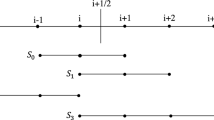Abstract
The phenomenon of shock boundary layer interaction of a shock train under the influence of a normal suction slot is studied. In previous work, it was found that a normal, circumferential suction slot is sufficient to stabilize the primary shock of a shock train in as much as that the back pressure of the shock train can be increased until the shock train gradually changes into a single normal shock. Based on the experimental and numerical results, a flow model was derived which explains the transition of a shock train into a single shock under the influence of boundary layer suction. In this work, the normal shock boundary layer interaction model is validated against flow cases with different upstream Mach and Reynolds numbers. For that purpose three different nozzle flows are investigated at various total pressure levels. In a second step, the flow model is extended to the oblique shock case, correlating the suction mass flow with the total pressure distribution of the incoming boundary layer and the static pressure downstream of the oblique shock. Finally, the influence of the suction cavity pressure onto the shock boundary layer interaction is considered.












Similar content being viewed by others
References
Chung-Jem, T., Eklund, D., Behdadnia, R., Jackson Th.: Investigation of boundary layer bleed for improving scramjet isolator performance, In: 13th International Space Planes and Hypesonic Systems Technologies, AIAA Paper, pp. 2005–3286 (2005)
Cuffel, R.F., Back, L.H.: Flow and heat transfer measurements in a pseudo-shock region with surface cooling. AIAA J. 14(12), 1716–1722 (1976)
Davis, D.O., Gessner, F.B., Kerlick, G.D.: Experimental and numerical investigation of supersonic flow through a square duct. AIAA J. 24(9), 1508–1515 (1986)
Donovan, J.F.: Control of shock wave/turbulent boundary layer interactions using tangential injection, In: 34th Aerospace Sciences Meeting kkk Exhibit, AIAA Paper, Reno, pp. 96–0443 (1996)
Fujimoto, A., Niwa, N., Sawada, K.: Numerical investigation of supersonic inlet with realistic bleed and bypass systems. J. Propuls. Power 8(4), 857–861 (1992)
Matsuo, K., Miyazato, Y., Kim, H.D.: Shock train and pseudo-shock phenomena in internal gas flows. Prog. Aerosp. Sci. 35, 33–100 (1999)
McCormick, D.C.: Shock/boundary-layer interaction control with vortex generators and passive cavity. AIAA. 31(1), 91–96 (1993)
Peake, D.J.: The use of air injection to prevent separation of the turbulent boundary layer in supersonic flow, Aeronautical Research Council Current Papers, C.P. No. 890 (1966)
Shih, T.I.-P., Rimlinger, M.J., Chyu, W.J.: Three-dimensional shock wave/boundary layer interactions with bleed. AIAA J. 31(1), 1819–1826 (1993)
Stanewsky, E., Délery, J., Fulker, J., Geißler, W. (eds.): Euroshock: drag reduction by passive shock control. Vieweg, Wiesbanden (1997)
Stanewsky, E., Délery, J., Fulker, J., de Matteis, P. (eds.): Euroshock II: Drag reduction by shock boundary layer control. Springer Verlag, Berlin (2002)
Weise, A.: The separation of flow due to compressibility shock, NACA TM No. 1152 (1947)
Weiss, A., Grzona, A., Olivier, H.: Behaviour of shock trains in a diverging duct. Exp. Fluids 49(2), 355–366 (2010)
Weiss, A., Olivier, H.: Behaviour of a shock train under the influence of boundary-layer suction by a normal slot. Exp. Fluids 52, 273–287 (2012)
Acknowledgments
The research reported in this paper was funded by the DFG (German research foundation) PAK 75/1. The author also wishes to acknowledge the efforts of Wolfgang Bauer to prepare and carry out the experiments presented herein.
Author information
Authors and Affiliations
Corresponding author
Additional information
Communicated by A. Hannemann and K. Kontis.
This paper is based on work presented by the first author at the 28th International Symposium on Shock waves, Manchester, UK, July, 17-22, 2011.
Rights and permissions
About this article
Cite this article
Weiss, A., Olivier, H. Shock boundary layer interaction under the influence of a normal suction slot. Shock Waves 24, 11–19 (2014). https://doi.org/10.1007/s00193-013-0456-5
Received:
Revised:
Accepted:
Published:
Issue Date:
DOI: https://doi.org/10.1007/s00193-013-0456-5




